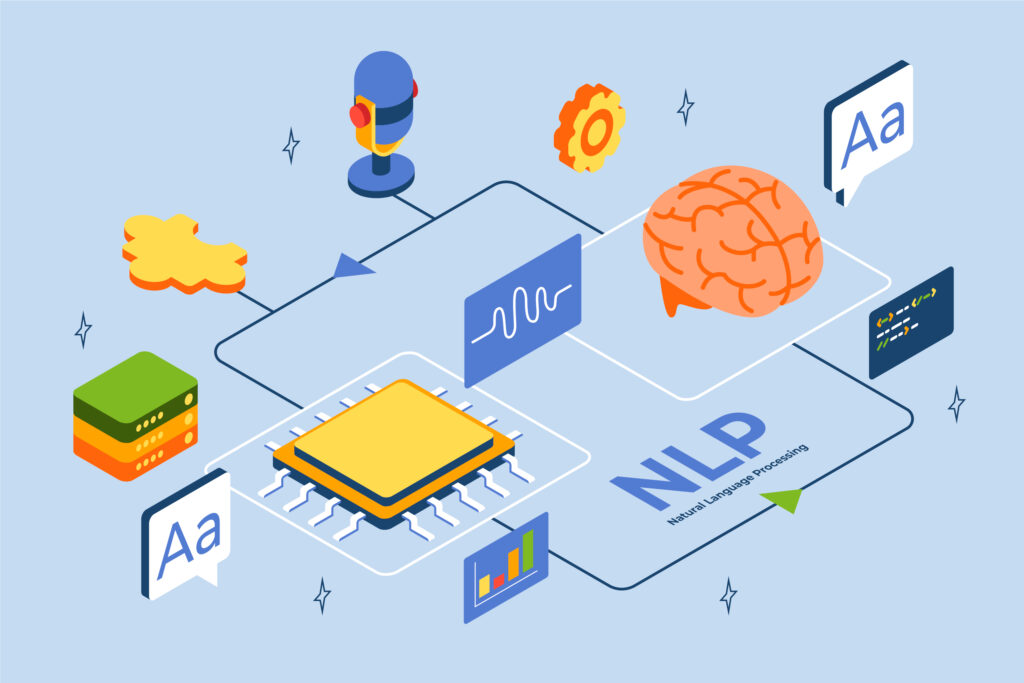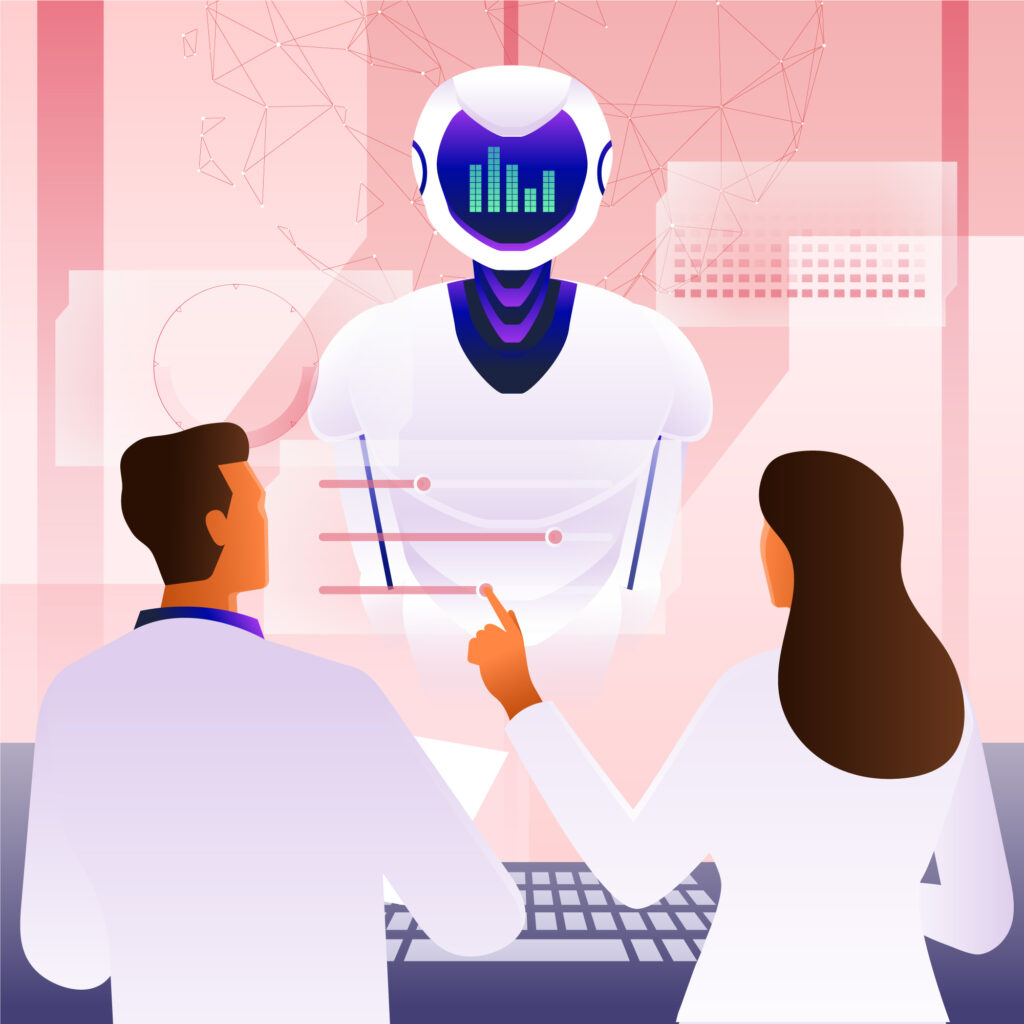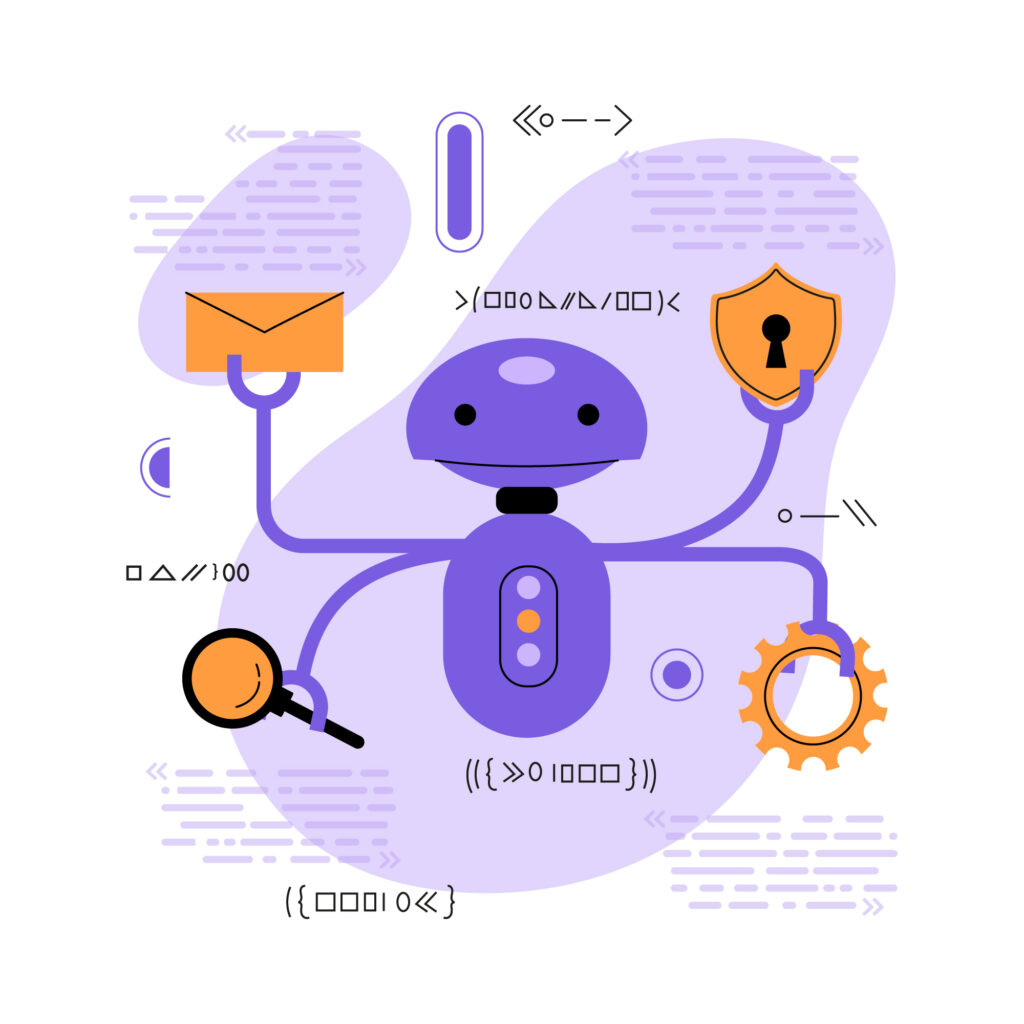If you’re wondering how to build an AI model, this guide breaks it down step-by-step. Start with defining your problem, then collect and prepare your data. We’ll cover choosing the right algorithms, training your model, and finally deploying it. It’s straightforward and practical, perfect for anyone ready to dive into AI and understand core AI model development steps used when building machine learning models.
Key Takeaways
– Establish clear problem definitions and objectives to ensure your AI model addresses the right issues and meets stakeholder expectations—this anchors the entire AI model lifecycle.
– Prioritize high-quality data collection, cleaning, and preparation to build robust AI models that perform accurately and reliably, emphasizing strong training data for AI models.
– Continuously monitor and update your AI model after deployment to maintain its effectiveness and adapt to changing data and needs, using clear AI model performance metrics.
Defining the Problem and Setting Objectives
Clearly defining the problem and setting specific objectives is the first step in building a successful AI model. This involves:
– Guiding the choice of model and evaluation criteria, making it crucial for any machine learning project and later AI model testing and validation.
– Understanding the business context and identifying pain points.
– Aligning stakeholder expectations and project goals to ensure the AI model addresses the right issues.
Outlining constraints and assumptions helps set realistic expectations regarding resources and data availability. Goals should include identifying desired outcomes and potential challenges. Clear business objectives guide the development process, ensuring the AI model meets its intended purpose within a repeatable AI model development workflow.
Aligning objectives with stakeholder needs promotes project success and ensures adequate support and resources throughout the project lifecycle.
Data Collection and Preparation

High-quality, substantial datasets are crucial for effective training in any AI system. Identifying data sources is the first step in data collection, including:
– Public datasets
– APIs
– Web scraping
– Internal databases
AI-generated data can supplement limited real-world datasets but must be carefully managed to avoid bias and protect the integrity of training data for AI models.
After gathering data, the next critical step is data cleaning and preprocessing, which includes addressing missing values, eliminating duplicates, and normalizing datasets to maintain accuracy and consistency. Libraries like Pandas facilitate extensive data processing operations and manipulation, making this process more efficient among common tools for building AI models.
Feature engineering transforms raw data into meaningful inputs for the AI model, enhancing its performance. Techniques like Recursive Feature Elimination (RFE) help select the most relevant attributes. Data engineering and high-quality data preparation ensure robust and reliable input data, crucial for accurate predictions and successful AI model testing and validation later on.
Ensuring data quality throughout the process is paramount, as poor quality data can lead to poor model performance and unreliable outcomes. Maintaining data security and conducting statistical analysis to understand data patterns and relationships is essential, laying a solid foundation for subsequent AI model development steps.
Selecting the Right Algorithm
Choosing the right algorithm is critical in developing AI models. Each algorithm has distinct strengths and weaknesses that impact project outcomes. The selected AI technology should align with the specific tasks the model is designed to perform. Common algorithms include neural networks, decision trees, and support vector machines, spanning both supervised vs unsupervised learning paradigms.
Deep learning techniques like convolutional neural networks (CNNs) and recurrent neural networks (RNNs) are particularly effective for tasks involving images, audio, and sequential data. Specialized AI techniques, such as foundation models like GPT, can be fine-tuned for generative tasks using deep learning models.
AutoML tools can automate tasks like data preprocessing and algorithm selection, making machine learning more accessible and serving as approachable tools for building AI models. The algorithm choice significantly influences model performance, so selecting the right tools is crucial for building an efficient AI model.
Designing the Model Architecture

Designing the model architecture significantly affects the efficiency and accuracy of the AI model. The architecture includes components such as layers of neurons (input, hidden, and output layers), activation functions, and the overall structure of the neural network. Activation functions like ReLU, sigmoid, and tanh define how neurons respond to input—central concepts in AI model architecture design.
Experimenting with various architectures is essential to find the optimal configuration for specific tasks, involving:
– Adjustments in the number of layers
– Adjustments in the number of neurons
– Adjustments in the number of connections
These adjustments help achieve the best performance. Additionally, activation functions:
– Control neuron firing
– Are crucial for the model’s effectiveness.
Transfer learning allows developers to leverage existing models as a foundation to train models for new projects, accelerating development and improving performance. Carefully designing the model architecture helps create intelligent AI models that perform efficiently and accurately and pass rigorous AI model testing and validation.
Training the AI Model

Training the AI model involves:
– Feeding it data and adjusting parameters to reduce errors and improve performance.
– Loading and preprocessing data.
– Splitting data into training, validation, and testing subsets.
- Defining the model’s structure while training models.
Frameworks like TensorFlow and PyTorch are commonly used for implementing AI models and are among the most popular tools for building AI models.
The model learns from data, aiming to mimic human intelligence. Key points about the training process include:
– Monitoring the training process confirms that the model is learning correctly and allows for necessary adjustments.
– Performance metrics like accuracy, precision, recall, and F1—core AI model performance metrics—should be tracked to detect issues and improve performance.
– Significant computational resources, including powerful GPUs, are needed for training.
– Cloud platforms like Google Colab, AWS, and Azure provide access to these resources.
Batch size, referring to the number of samples processed before updating weights, and backpropagation, for incrementally adjusting internal parameters, are key aspects of training. Typically, 100–1000 epochs are required for effective training. Tools such as Keras, PyTorch Lightning, and TensorFlow help manage the process and ensure the model’s effectiveness within your AI model lifecycle.
Evaluating Model Performance
Evaluating model performance ensures it meets business objectives and delivers real value. Common metrics include:
– Accuracy: can be misleading in imbalanced datasets
– Precision: indicates the accuracy of positive predictions
– Recall: assesses how well the model performs in identifying actual positive cases
- F1-score
The F1 score combines precision and recall into a single metric, balancing their importance. Establishing clear objectives and metrics is crucial for effective evaluation, ensuring alignment with strategic goals. Continuous evaluation ensures AI models remain accurate and reliable in real-world applications, and utilizing techniques like k-fold cross-validation can enhance this process as part of robust AI model testing and validation.
Fine-Tuning and Optimization
Fine-tuning and optimization enhance AI model performance. Hyperparameter tuning involves adjusting settings like learning rate and batch size. Techniques such as grid search, random search, and Bayesian optimization identify optimal hyperparameter configurations.
Overfitting and underfitting are common issues in AI model training. Overfitting occurs when a model learns too much from training data, leading to poor performance on new data, while underfitting occurs when a model does not learn enough. Techniques like dropout layers, regularization, and cross-validation combat overfitting during training and improve downstream AI model performance metrics.
Fine-tuning enhances AI models using smaller, specialized datasets to fine tune performance for specific tasks. Transfer learning allows models trained on broad datasets to adapt to specialized domains with less data, improving applicability. Sequential fine-tuning systematically refines performance on specialized tasks while retaining prior knowledge.
Regularization techniques maintain a balance between underfitting and overfitting, ensuring optimal training of models across the AI model lifecycle.
Deploying the AI Model

Deploying the AI model involves making it accessible and operational in real-world applications. Model deployment options include cloud platforms like AWS, Google Cloud, and Azure, as well as on-premises solutions. Tools like Docker, Kubernetes, and MLflow ensure consistent and scalable deployments and are core to deploying AI models at scale.
Continuous performance monitoring post-deployment is crucial to maintain the model’s effectiveness. Real-time tracking of model’s performance, model’s predictions, prediction latencies, and error rates helps identify and address issues promptly.
Integrating the AI model aims to enhance processes and ensure its accessibility in applications, which should be documented for transparency and future AI model testing and validation.
Monitoring and Updating the AI Model
Post-deployment monitoring ensures AI models remain effective and up-to-date by:
– Preventing outdated or biased predictions
– Regularly retraining models to adapt to new data, maintaining accuracy and relevance
- Using key performance indicators (KPIs) and real-time monitoring to evaluate effectiveness and detect issues like model drift
Incorporating user feedback and establishing feedback loops significantly enhance AI model performance by addressing real-world needs. Continuous monitoring and updating ensure the AI model continues to deliver value and remains aligned with business objectives throughout the AI model lifecycle.
Ethical Considerations in AI Development

Ethical considerations are paramount in AI development to ensure models are fair, transparent, and secure. Fine-tuning can mitigate biases by exposing models to more balanced datasets. Reflecting and amplifying societal biases is a key issue, so ethical AI practices should be implemented to ensure unbiased decisions.
Responsible AI techniques include:
– Minimizing bias in development.
– Researchers working on new methods to detect and reduce biases in AI.
- Explainable AI tools that enhance transparency and understanding of decision-making processes, making justifying outputs crucial for transparency.
Model explainability helps build trust in AI predictions. Maintaining detailed documentation of performance supports transparency and continuous improvement. Data security and privacy concerns are paramount, necessitating robust management strategies throughout the training process.
Robust security measures protect AI systems from cyber threats and ensure compliance with data privacy. Regular audits assess systems against performance, compliance, and ethical standards, identifying areas for improvement and measurable AI model performance metrics.
Tools and Frameworks for AI Model Development
Various tools and frameworks are available for AI model development, each with its strengths and use cases. Popular Python libraries include:
– TensorFlow: Effective for tasks involving unstructured data such as images and audio.
– PyTorch: Favored for its flexibility and ease of use, making it suitable for rapid experimentation.
– Keras: Widely used for building and training neural networks.
– Scikit-learn: Commonly used for traditional machine learning tasks.
Here are some popular machine learning libraries and their key features:
– Keras: Provides a simplified interface for building neural networks, making it accessible for beginners.
– Hugging Face: Specializes in natural language processing and offers pre-trained models that can be easily deployed.
– Scikit-learn: Widely used for traditional machine learning tasks and is user-friendly for smaller projects.
– XGBoost: Known for high performance in structured data tasks and is often used in data science competitions.
Cloud platforms like AWS, Google Cloud, and Microsoft Azure offer pre-built AI services. They also provide the necessary infrastructure for development. When developing an intelligent AI model, it is essential to select the right tools and AI frameworks that:
– Are tailored to the specific goals
– Fit the team structure
– Match the complexity of the use case
These are foundational tools for building AI models across supervised vs unsupervised learning scenarios.
Challenges in AI Model Development and Solutions
AI model development comes with its set of challenges, but understanding these hurdles can lead to effective solutions. One major challenge is addressing hardware limitations, which involves ensuring sufficient computational power and storage to manage large datasets. Investing in flexible, cloud-native infrastructure and adopting microservices architectures can ensure scalability as demands grow to build AI models. Additionally, AI model creation can streamline processes and enhance efficiency, especially when you decide to develop your own AI model.
Data quality issues can significantly impact the performance and outcomes of AI models. Effective communication among diverse teams is vital to prevent gaps that could lead to inaccuracies in AI project outcomes. Establishing a culture of collaboration among stakeholders can facilitate smoother AI project execution and stronger AI model testing and validation practices.
Understanding the complexities of AI model development is crucial for navigating challenges such as infrastructure scalability and data quality. Planning for scalability ensures that AI systems can handle increasing demands and adapt to evolving business needs effectively.
Expert Tips for Successful AI Projects
Successful AI projects often hinge on a few key principles. Human feedback is essential at every stage of AI development to ensure that the systems are effective and aligned with real-world needs. Complex models require more specialized reviewers, engineers, and evaluators to ensure accuracy and reliability.
Encouraging a culture of innovation within the organization can enhance employee engagement and facilitate the adoption of AI technologies. Organizations that foster an innovative environment are better equipped to integrate AI into their operations, leading to more successful AI projects and healthier AI model performance metrics over time.
Cost and Time Considerations
The complexity of the AI model significantly influences development time and associated costs. Factors contributing to the cost of building an AI model include:
– Data collection
– Tools
– Computational resources
- Skilled personnel
Additionally, organizations often seek to build an AI to streamline processes. Estimated investment needed for developing AI models generally ranges from $40,000 to $400,000. The expenses for developing a simple AI project can begin at approximately $5,000 and can escalate based on complexity and capabilities.
Data collection and preparation can entail costs starting from $10,000, depending on the complexity of the data. AI projects requiring extensive data labeling may incur costs of up to $30,000, particularly for specialized fields.
The average hourly rate for AI development can range from $25 to $99, varying by location and expertise. Investing in advanced AI solutions can lead to costs that may surpass $500,000, which includes ongoing expenses that may exceed $5,000 annually—especially for robust deploying AI models strategies and continuous monitoring in the AI model lifecycle.
Future Trends in AI Model Development
The AI field is witnessing several important trends and advances:
– Multimodal large language models and the trend towards agentic and autonomous AI by 2025.
– Edge AI, which enables computations on devices, reducing latency for applications that require real-time responses.
- Explainable AI (XAI), which is crucial for clarifying AI decision-making and fostering trust, especially in sensitive sectors.
Autonomous AI systems are equipped to manage complex tasks independently, leading to increased efficiency in various applications. As artificial intelligence continues to evolve, these trends will shape the future of intelligent systems and AI model development, offering new opportunities and challenges for developers, ultimately contributing to AI success and informing future AI model architecture design choices.
Summary
In summary, building an AI model involves a series of well-defined steps, from defining the problem and setting objectives to deploying and monitoring the model. Each stage plays a crucial role in ensuring the AI model is effective, reliable, and aligned with business objectives. By following this comprehensive guide, you will be well-equipped to navigate the complexities of AI model development and create models that deliver real value using the right tools for building AI models.
As you embark on your AI journey, remember that continuous learning and adaptation are key to success. Stay informed about the latest trends, tools, and best practices in AI development, and always strive for innovation and ethical considerations. The future of AI is bright, and with the right approach to AI model testing and validation, deploying AI models, and monitoring the AI model lifecycle, you can be a part of this exciting technological revolution.

Leave a Reply